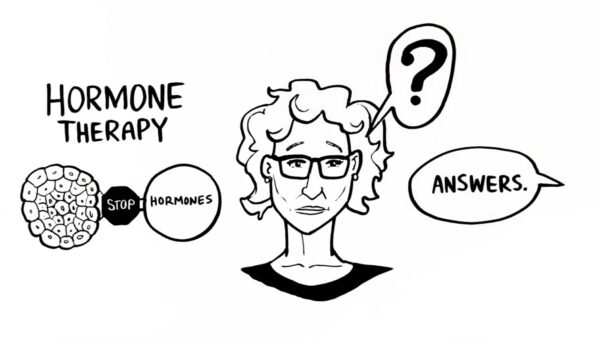What is Skytrofa?
Skytrofa (lonapegsomatropin–tcgd) is a once-weekly injectable growth hormone used to treat children with growth hormone deficiency (GHD). It helps promote normal growth by replacing the natural growth hormone that the body lacks.
Efficacy and Statistics of Skytrofa (Lonapegsomatropin-tcgd)
1. Clinical Trial Results (heiGHt Trial – Phase 3)
Study Design:
- Participants: 161 treatment naive children with GHD.
- Comparison: Skytrofa (once-weekly) vs. Genotropin (daily somatropin).
- Duration: 52 weeks.
Key Findings:
| Parameter | Skytrofa (Lonapegsomatropin) | Genotropin (Daily Somatropin) | Difference |
|---|---|---|---|
| Annual Height Velocity | 11.2 cm/year | 10.2 cm/year | +1.0 cm/year |
| Height SDS Improvement | +1.1 SDS | +0.96 SDS | +0.14 SDS |
| IGF-1 SDS Levels | Normalized | Normalized | Similar |
| Injection Frequency | Once per week | Daily | Less frequent |
- Skytrofa achieved a statistically significant improvement in annual height velocity compared to daily growth hormone.
- More patients reached normal height percentiles compared to Genotropin.
2. Long-Term Growth Benefits (enliGHten Trial – Extension Study)
- Participants: Children who completed the heiGHt trial continued with Skytrofa for up to 5 years.
- Findings:
- Sustained height gains over multiple years.
- No significant growth deceleration.
- Maintained a normal growth rate comparable to non-GHD children.
3. Compliance and Patient Preference
Real-World Data:
- Studies show ~90% adherence to Skytrofa due to its once-weekly dosing.
- 85% of parents and caregivers preferred Skytrofa over daily injections for their children.
- Reduction in missed doses compared to daily GH therapies.
4. Safety Profile
- Most common side effects:
- Injection site reactions (mild redness, swelling).
- Headache (5-10% of patients).
- Joint pain (3-7% of patients).
- Increased IGF-1 levels (manageable with dose adjustments).
- No new safety concerns compared to daily somatropin.
- No increased risk of glucose intolerance or tumor development based on long-term data.
5. Comparison Table: Skytrofa vs. Daily Growth Hormone Therapies
| Feature | Skytrofa (Lonapegsomatropin) | Daily Growth Hormone (Somatropin) |
|---|---|---|
| Dosing Frequency | Once per week | Daily |
| Annual Growth Rate | 11.2 cm/year | 10.2 cm/year |
| Adherence Rate | ~90% | ~70-80% |
| Patient Satisfaction | Higher | Moderate |
| Side Effect Profile | Similar to daily |

What Are The Side Effects Of Skytrofa?
1. Common Side Effects (Mild & Manageable)
These side effects seen in 5-15% of patients and are generally mild;
- Injection site reactions (redness, swelling, itching)
- Headache
- Nausea
- Joint pain (arthralgia)
- Muscle pain (myalgia)
- Fatigue
2. Less Common Side Effects (Moderate)
These seen in <5% of patients and may require monitoring;
- Fluid retention (mild swelling in hands/feet)
- Increased blood sugar levels (hyperglycemia)
- Carpal tunnel syndrome (rare in children)
- Mild elevation of IGF-1 levels (can be managed with dose adjustments)
3. Rare but Serious Side Effects
Some side effects require immediate medical attention;
- Intracranial Hypertension (IH) (severe headache, vision changes, nausea)
- Slipped Capital Femoral Epiphysis (SCFE) (hip/knee pain, limping)
- Pancreatitis (severe stomach pain, vomiting)
- Hypersensitivity reactions (rash, swelling, difficulty breathing)
4. Long-Term Considerations
- No increased cancer risk has been observed but GH therapy is avoided in patients with active malignancies.
- Diabetes Risk: Growth hormone therapy may slightly increase the risk of insulin resistance in predisposed individuals.
5. Summary Of Side Effects
| Category | Side Effects | Frequency | Notes |
|---|---|---|---|
| Common (Mild & Manageable) | – Injection site reactions (redness, swelling, itching) – Headache – Nausea – Joint pain (arthralgia) – Muscle pain (myalgia) – Fatigue | 5-15% of patients | Usually resolve on their own; mild discomfort |
| Less Common (Moderate) | – Fluid retention (mild swelling) – Increased blood sugar (hyperglycemia) – Carpal tunnel syndrome (rare in children) – Mild IGF-1 level increase | <5% of patients | May require monitoring or dose adjustment |
| Rare but Serious | – Intracranial Hypertension (IH) (severe headache, vision changes, nausea) – Slipped Capital Femoral Epiphysis (SCFE) (hip/knee pain, limping) – Pancreatitis (severe stomach pain, vomiting) – Severe allergic reactions (rash, swelling, difficulty breathing) | Rare (<1%) | Requires immediate medical attention |
| Long-Term Considerations | – No increased cancer risk observed – May increase insulin resistance in some patients | Ongoing studies | Patients with diabetes or a family history should be monitored |
You can find detail about another common growth hormone therapy drugs Genotropin in below:
What Are The Costs Of Skytrofa?
1. United States:
- Without Insurance: The price for Skytrofa 3 mg subcutaneous injection is about $3,178 for a supply of four injections.
- With Insurance: Co-pay amounts change on individual insurance plans. Some patients may be eligible for co-pay assistance programs and potentially reducing out-of-pocket costs.
- Assistance Programs: Eligible patients might pay as little as $5 per monthly prescription, with an annual maximum cap of $6,000.
2. Europe:
- Germany: A package containing four prefilled cartridges of Skytrofa 13.3 mg is priced at about €4,181.36.
- Other European Countries: Prices may change. For instance; some providers list Skytrofa 5.2 mg at around €2,105.07 for a package of four prefilled cartridges.

What Are The Dosages Of Skytrofa?
1. Recommended Dosage
- Initial dose: 0.24 mg/kg once weekly.
- Adjustments: Based on growth response, IGF-1 levels and tolerability.
2. Available Dosage Strengths
Skytrofa comes in prefilled cartridges in the following strengths:
| Strength (mg) | Growth Hormone Content (mg) | Cartridge Color |
|---|---|---|
| 3.6 mg | 3.6 mg | Purple |
| 7.2 mg | 7.2 mg | Green |
| 11.2 mg | 11.2 mg | Blue |
| 15 mg | 15 mg | Red |
| 18 mg | 18 mg | Yellow |
| 21 mg | 21 mg | Orange |
| 24 mg | 24 mg | Light Blue |
3. Skytrofa Dosage Chart Based on Body Weight
Below is a dosage guide based on weight;
| Body Weight (kg) | Recommended Weekly Dose (mg) | Cartridge Strength |
|---|---|---|
| 10 kg (22 lbs) | 2.4 mg | Not available (round to nearest) |
| 15 kg (33 lbs) | 3.6 mg | 3.6 mg (Purple) |
| 20 kg (44 lbs) | 4.8 mg | 7.2 mg (Green) (Partial use) |
| 25 kg (55 lbs) | 6 mg | 7.2 mg (Green) (Partial use) |
| 30 kg (66 lbs) | 7.2 mg | 7.2 mg (Green) |
| 35 kg (77 lbs) | 8.4 mg | 11.2 mg (Blue) (Partial use) |
| 40 kg (88 lbs) | 9.6 mg | 11.2 mg (Blue) (Partial use) |
| 45 kg (99 lbs) | 10.8 mg | 11.2 mg (Blue) |
| 50 kg (110 lbs) | 12 mg | 15 mg (Red) (Partial use) |
| 55 kg (121 lbs) | 13.2 mg | 15 mg (Red) (Partial use) |
| 60 kg (132 lbs) | 14.4 mg | 15 mg (Red) (Partial use) |
| 65 kg (143 lbs) | 15.6 mg | 15 mg (Red) + Partial |
| 70 kg (154 lbs) | 16.8 mg | 18 mg (Yellow) (Partial use) |
| 75 kg (165 lbs) | 18 mg | 18 mg (Yellow) |
| 80 kg (176 lbs) | 19.2 mg | 21 mg (Orange) (Partial use) |
| 85 kg (187 lbs) | 20.4 mg | 21 mg (Orange) (Partial use) |
| 90 kg (198 lbs) | 21.6 mg | 21 mg (Orange) |
| 95 kg (209 lbs) | 22.8 mg | 24 mg (Light Blue) (Partial use) |
| 100 kg (220 lbs) | 24 mg | 24 mg (Light Blue) |
Notes:
- Doses could be rounded to the nearest available cartridge strength.
- Adjustments are based on IGF-1 levels, growth response and tolerability.
- Maximum approved dose is 24 mg per week.
Advice for Skytrofa (Lonapegsomatropin) Users
1. Follow Proper Injection Guidelines
✅ Administer once weekly on the same day each week.
✅ Rotate injection sites (thighs, abdomen, buttocks) to avoid irritation.
✅ Use a clean and dry area for the injection to prevent infections.
✅ Store Skytrofa in the refrigerator (2°C – 8°C) and let it reach room temperature before use.
2. Monitor for Side Effects
🔹 Mild side effects like redness, swelling or headaches are common but usually temporary.
🔹 Watch for serious symptoms (severe headaches, vision changes or persistent pain) and get medical help if they occur.
🔹 Keep track of growth progress and IGF-1 levels with regular doctor visits.
3. Stay Consistent for Best Results
🔹 Don’t skip doses, set reminders to stay on track.
🔹 Missing doses frequently may reduce treatment effectiveness.
🔹 If you miss a dose; take it as soon as possible unless it’s close to the next scheduled dose.
4. Lifestyle and Nutrition Tips
🥦 Maintain a healthy diet rich in proteins, vitamins and minerals to support growth.
🏃 Encourage physical activity to promote overall well-being.
😴 Ensure good sleep, growth hormone works best during deep sleep.
5. Understand Cost & Support Options
💰 Check insurance coverage and co-pay assistance programs to reduce costs.
📞 Contact Skytrofa patient support programs for help with financial assistance.
We wish a healthy and heappy life to you. Also you can find a helpful comparison of Growth Hormone Deficiency medications below:

